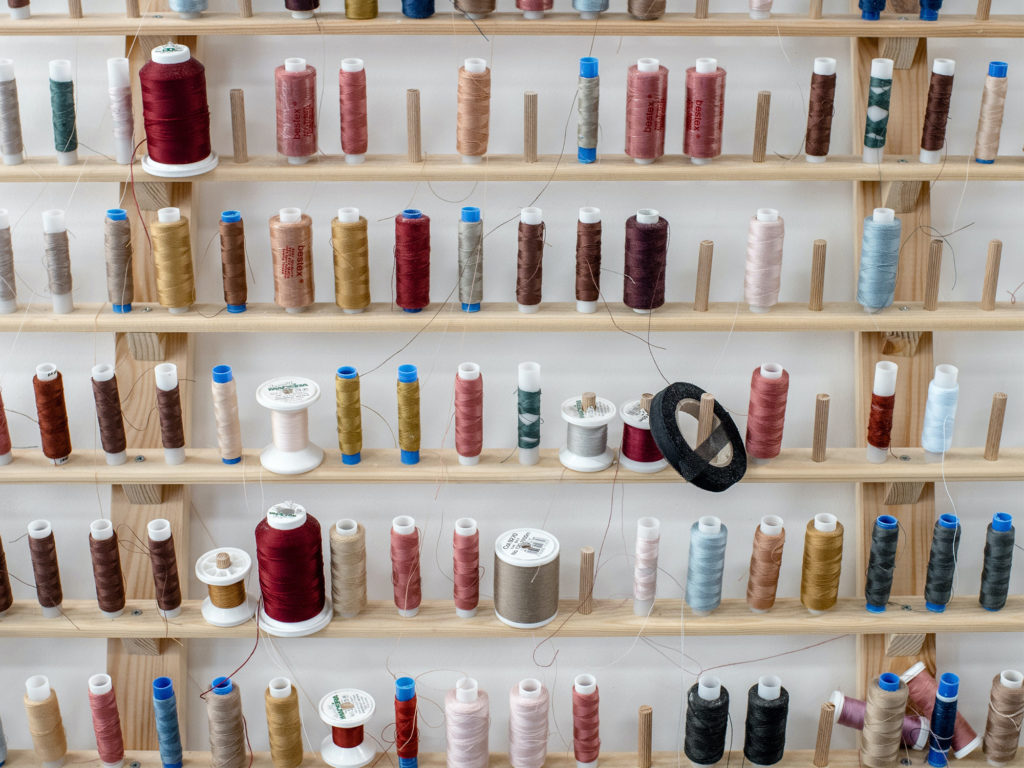Inventory tracking is often a small business owner’s least favorite word combo. It has notoriously been known as a headache to so many businesses. Creating is the fun part! Math, organizing, and bookwork, however, tends to be something we all dread; which then only causes us to put it off and fall behind.
Up until a year ago, our very own co-founder Dianna was struggling with this exact concept. She realized the importance of inventory tracking, but wanted a more efficient way to do it. This later lead her to create Inventora with her co-founder Jeremy. However, prior to this discovery, Dianna learned *a lot* about the importance of inventory tracking.
We’ve sat down and talked to Dianna about her best practices and experiences of inventory tracking to help you stay organized. As well as, take some pressure off your monthly inventory audit headache… Here’s her advice below:
Organizing Material
The most important skill you can have as a business owner is organization.
It’s important to have dedicated places for supplies and products. When I started, I simply had one shelf strictly for my candle materials and another shelf to hold the finished creations. As my business grew, these shelves expanded into a specific area of the room and space under work tables. Now, they are placed throughout my workspace, in areas that I will naturally need those supplies. With backstock (extra supplies, usually still in boxes) in a different room.
As I go through my days of production, I’ve learned it’s important to have a system that helps track my every move. Cue: Inventora! Inventora is helpful for me to visually see when supplies become low. Also, having Inventora alongside helps me ensure I don’t miss a single ounce of fragrance, or end up a wick short. It’s honestly a team member at this point!
Because I’ve tidied up my inventory tracking, I now know the exact moment when stock gets low. I have a better understanding of how frequently to order supplies. I even know my COGS (cost of goods sold) down to a T for each and every product. And if you truly want to maximize your profits in business, knowing your COGS is critical.

Forecasting Supplies
Inventory tracking is so much more than just knowing what you have on hand. When you track your inventory, you’re forecasting your business and ensuring it runs as smooth as possible with no interruptions.
Last holiday season was an incredible quarter for my first year in business, but it was also the worst to date. This is actually why Inventora was created! I wasn’t on top of my inventory, and before I knew it, my supplies were running out of stock left and right.
I literally sold out of my entire inventory, but it was a terrible position to be in. That means I could have sold much more had I been better prepared. I was in a position of ordering supplies last minute in the middle of huge shipping delays. Therefore taking even longer to receive the materials needed. To this day, I have some supplies left from last holiday season due to under-ordering and over-ordering in the wrong timeframes of the year.
Thankfully, I have a great customer base to where everyone was understanding through this process. But, this isn’t to say that’s always the case. It’s better to avoid these disruptions all together. Having a clear plan in sight for how much of X product to sell this upcoming month and ordering the appropriate amount of supplies for that is a step on the right foot. Then as the first 10 days pass, you have a good sense of whether or not you’ll need to continue ordering a backstock of those supplies based off your inventory usage.

Minimizing Losses
A great habit to instill is inventory analyzing. I know, that sounds not fun at all, but as a growing business it’s crucial to understands all that is happening within your supply to selling chain.
Carve out 30 minutes to an hour every two weeks and truly just sit down and review what has been happening the past two weeks, what happened during the upcoming month last year, and overall your history and trajectory. Depending what stage in business you are in, you may begin to see patterns slowly form, or you may notice trends that have already been set by previous years.
Pay attention to these details! It is in this data that you will know what amounts of inventory to have on hand. This minimizes loss on supplies and maximizes your profits on products. Reviewing this data also helps to establish goals within your business. For example, if last October you sold 86 pumpkin candles, why not push to exceed that goal by 20% this year? That would mean setting a goal of selling 103 pumpkin candles.
If you notice in your data that X product didn’t sell well last year, then you know not to create it this time around, or create a minimal amount of it with the purpose of selling out completely. You’ll also notice what products always sell very well and those are the ones that you should invest in. These are your best sellers and they should definitely stay in stock!
Order Accuracy
Tracking your inventory properly isn’t only a behind the scenes effort, it also helps maintain customer satisfaction! If you’re not paying close attention, someone could order a product that you don’t have ready to ship and it may not put you or the customer in the best situation.
You may stress to create the product in a short timeframe and the customer may be unhappy because that was a gift they needed ASAP. Or perhaps when you go to make the product, you then learn that you don’t have enough supplies on hand to actually finish the process, and then there’s a delay between that and ordering what’s needed to proceed. There’s lots of sticky situations that could evolve from not tracking your inventory properly.

Saves Time
Lastly, the more you’re able to stay on top of things, the more time you’ll spend creating and the less time you’ll spend catching up. As lightly mentioned throughout all of this, when you track your inventory properly, there is zero room for error. This means that you can efficiently work on your business rather than work out the uh-oh’s in between it all. It’s a matter of being able to do it once, do it right, and be done, rather than do it once, do it wrong, and do it all over again… and maybe again and again!
With the help of Inventora, and Dianna’s own personal experiences, we hope we can help ease the tension it takes to keep up with your small business’s inventory tracking. Tell us something below that you do for your small business that helps you save time and keep organized when it comes to taking your monthly inventory! Comment below or reach out to us on our Instagram!



1 Comment
I Fashion Styles
I simply needed to say thanks once more. I’m not certain the things that I could possibly have accomplished in the absence of the actual thoughts contributed by you over this industry. It absolutely was a frightful crisis in my view, nevertheless observing a professional mode you processed it forced me to leap with delight. I am happy for your work and as well , wish you realize what an amazing job you happen to be accomplishing teaching many people with the aid of your web page. Most likely you’ve never come across any of us.